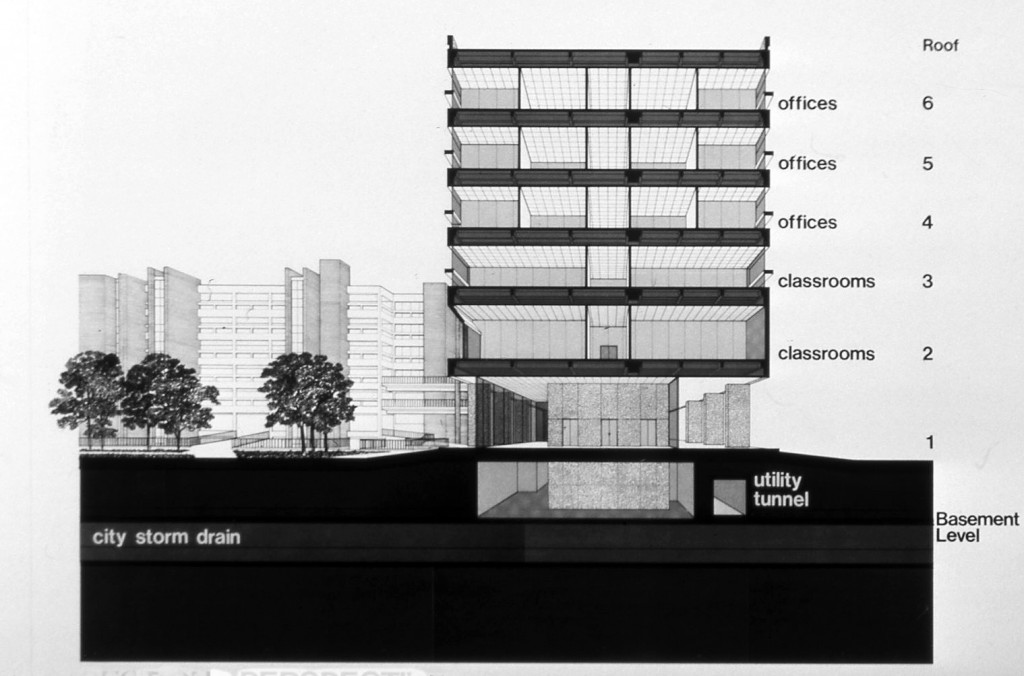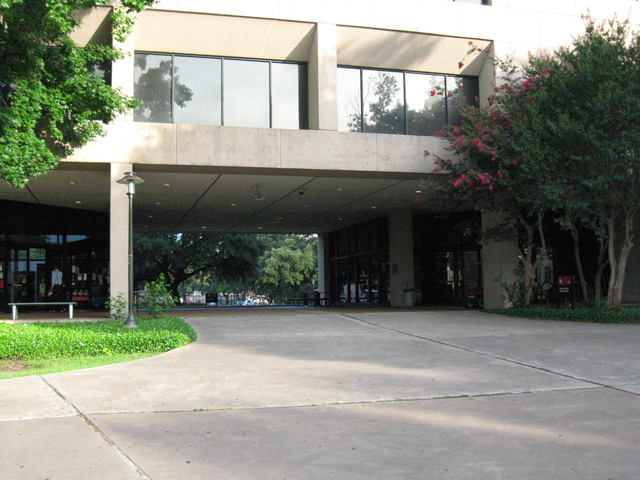
The recent post about Philip G. Hoffman Hall (PGH) failed to answer an important question: Why does it have a big hole in it? As with most cosmic questions, the answer to this one is that “it’s all connected.” In this case, PGH and its hole are connected to the change in the university’s master plan in the mid 1960s.
![1967 aerial view shows UH buildings arranged around several formal axes [UH Photographs Collection]](http://weblogs.lib.uh.edu/speccol/files/2014/05/UH-campus-1967-300x190.jpg)
UH Campus looking east (1967). Note street between Anderson Library and Ezekiel Cullen Building. UH Photographs Collection
Before the change in the master plan, a street ran through what is now Butler Plaza and passed between the Ezekiel Cullen Building and Anderson Library. See the 1967 aerial view of the campus. University planners decided to remove the street to create the plaza, and this required a new building opposite the library to provide a sense of enclosure.

PGH, section view. Agnes Arnold Hall in background. Note storm drain below breezeway. Kenneth E. Bentsen Architectural Papers
But below the street was a major city storm sewer, and an easement prevented them from placing a building over it. Their solution was a building with a large hole in the center that left the area over the storm sewer open, providing access if it is ever needed. In the construction view below, looking to the southeast, excavation for a basement stops short of the center of the building.
![Philip G. Hoffman Hall Construction [UH Photographs Collection]](http://weblogs.lib.uh.edu/speccol/files/2014/07/PGH-Construction.jpg)
Construction of Philip G. Hoffman Hall (c. 1972) UH Photographs Collection
